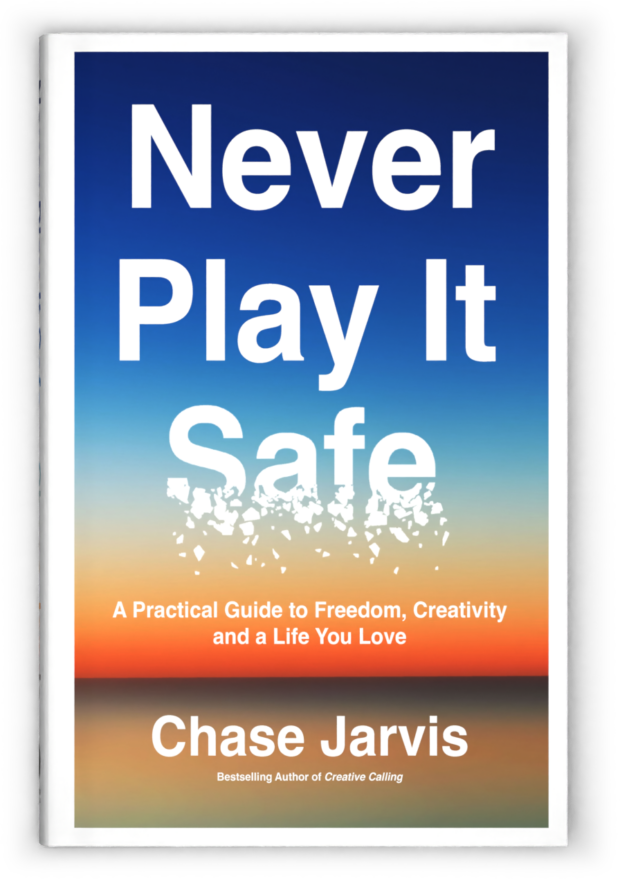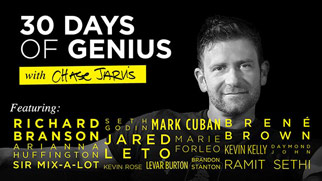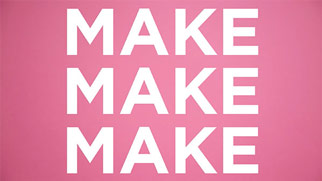It’s not every day you get to talk to someone who has sold more than 10 million copies of a single book. When I sat down with Mark Manson, the number one New York Times bestselling author of The Subtle Art of Not Giving a F*ck and Everything Is F*cked, I was struck by how his candid, no-nonsense approach to life is not a persona. It’s the real deal. He’s a writer who has captured the zeitgeist by cutting through the noise of superficial positivity to get to the core of what actually makes for a meaningful life.
Mark’s journey wasn’t an overnight success. He started where many of us do: with a blog. For nearly a decade, he wrote at markmanson.net, building an audience one brutally honest, insightful article at a time. He told me he never even thought of himself as a writer, getting bad grades in English class simply because he was bad at following the assignment, not because he couldn’t write. He found his calling by accident, discovering that the thing that felt natural and fun to him—writing long, philosophical forum posts on a Wednesday night—was a chore for most people. That blog became his proving ground, allowing him to hone his ideas and build a direct relationship with millions of readers long before a publisher ever came calling.
His work, including his recent Audible Original, Love Is Not Enough, consistently challenges us to look at the uncomfortable truths we’d rather avoid. But underneath the brash titles and profanity, there’s a profoundly thoughtful and practical philosophy. Mark’s message isn’t about being indifferent; it’s about choosing what to care about. It’s about understanding that a good life is not a life without problems, but a life with good problems. It’s a message that resonates deeply with any creative or entrepreneur who knows the path is paved with struggle and sacrifice.
I had the pleasure of hosting Mark on The Chase Jarvis LIVE Show, where we dove deep into his creative process, the psychology of success, and how to navigate the emotional challenges that come with any ambitious career. It was a fascinating look inside the mind of a writer who has profoundly impacted our generation. His appearance on the show, broadcast on CreativeLive, represents one of the great opportunities I’ve had to connect with creators who are shaping our culture and share their insights directly with our community.
During our conversation and in his books, Mark lays out a number of powerful ideas that can reframe how we approach our work and our lives. Here are a few that I believe are essential for any creative professional.
Find the Struggle You Enjoy
One of the biggest myths in the creative world is that if you find your passion, the work will feel effortless. Mark turns this idea on its head. He argues that the real question isn’t what you want to enjoy, but what struggle you are willing to sustain. Every path has its own version of a “shit sandwich,” and success comes down to finding the one you can tolerate eating. When he was in music school, he realized that practicing six hours a day made him miserable, even though he loved music. But with writing, even the frustrating days feel worthwhile. The struggle itself is part of what gives the work meaning.
- Identify Your Flavors of Hard: Make a list of the tasks you do in your creative work. Separate them into two columns: “Energizing Hard” (challenges that feel engaging and satisfying to overcome) and “Draining Hard” (tasks that leave you feeling empty and resentful). Your calling likely lives in the first column.
- Reframe Your Problems: When you face a creative block or a business setback, ask yourself: “Is this the kind of problem I signed up for?” If the answer is yes, it’s a sign you’re on the right path. It’s not about avoiding problems; it’s about solving the ones that matter to you.
- Test Your Tolerance: If you’re considering a new career path, don’t just focus on the glamorous parts. Research the grunt work. Talk to people in the field and ask them about their worst days. Volunteer or take on a small project to experience the grind firsthand before you commit.
Make Your Negative Emotions Useful
Our default setting is to avoid negative emotions like anxiety, fear, and even boredom. We see them as obstacles to be overcome. Mark suggests seeing them as data—and fuel. Biologically, negative emotions evolved to help us. Anxiety is a powerful motivator. Fear sharpens our focus. Frustration signals that something needs to change. Instead of trying to achieve a constant state of happiness, the goal should be to harness these feelings and make them serve your creative purpose. As he told me, “If I’m pissed off, how can I make this anger useful? Where can I channel it that will actually be beneficial for me?”
- Ask “What Is This For?”: When you feel a wave of anxiety about a deadline or a project, don’t just wish it away. Ask, “What is this anxiety motivating me to do?” Use it to double-check your work, prepare more thoroughly, or make a decision you’ve been putting off.
- Channel Frustration into Creation: Creative frustration is a sign that your current approach isn’t working. Instead of banging your head against the wall, use that energy to try something completely different. Write in a new genre, use a different color palette, or pivot your business strategy. Let the frustration break you out of your rut.
- Embrace Productive Boredom: In our hyper-connected world, we rarely let ourselves be bored. But boredom is often the precursor to creativity. When you feel apathetic or uninspired, resist the urge to fill the void with distraction. Sit with it. Let your mind wander. This is often where your most original ideas will surface.
Embrace the Freedom of the Beginning
When you’re just starting out, it’s easy to focus on what you lack: an audience, a budget, a track record. But Mark points out the hidden asset you have in spades: the freedom to have nothing to lose. At the beginning of your career, you can experiment, fail, and try weird things without anyone really noticing. There are no expectations to live up to and no established brand to protect. This freedom is a creative superpower that you will never get back once you achieve a certain level of success. It’s the time to take your biggest risks.
- Prioritize Reps Over Perfection: In the early days, the goal is not to create a masterpiece; it’s to get your reps in. Write every day. Shoot every day. Design every day. The sheer volume of work will teach you more than agonizing over a single project ever will.
- Fail on Purpose: Actively seek out projects and ideas that might not work. The stakes are low, so this is the perfect time to find the edges of your abilities. You’ll learn more from a spectacular failure than a safe, mediocre success.
- Don’t Ask for Permission: When you have no audience, you have no gatekeepers. Start the blog, launch the podcast, post the art. Use the internet as your testing ground to see what concepts resonate with people. By the time the “real” gatekeepers notice you, you’ll have already proven your ideas work.
PS – If you’re looking for a guide to help you build the life and career you’ve always wanted, the Seven Levers for Life is a free 7-day email course on just that.















